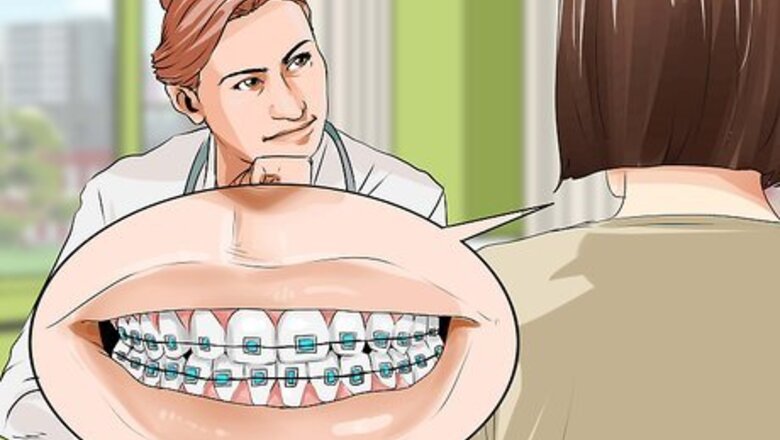
views
Connecting Rubber Bands
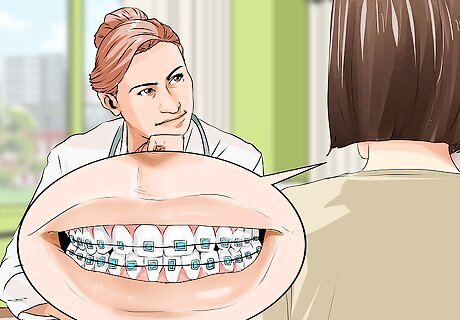
Get instructions from your orthodontist. When you're prescribed braces and rubber bands, your orthodontist should go over instructions with you. Rubber bands are applied in different ways depending on the structure of your mouth and what issue your orthodontist is trying to correct. You should ask them first about any questions you have regarding your rubber bands. If you are confused about any instructions after leaving the office, call your orthodontist.
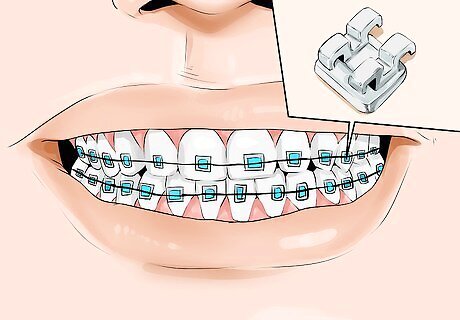
Learn the different parts of braces. Rubber bands are usually attached to the hooks on braces. Learn the different parts of braces before attempting to use rubber bands. Braces have brackets, triangular structures that are positioned on the front midsection of your teeth. Brackets are attached by archwire, small metal bands between brackets. If you need rubber bands, small hooks or buttons will be strategically placed at various parts of your braces. This is where you'll attach your rubber bands. The number of hooks or buttons you have, and where they are found, depends on the position of your rubber bands.
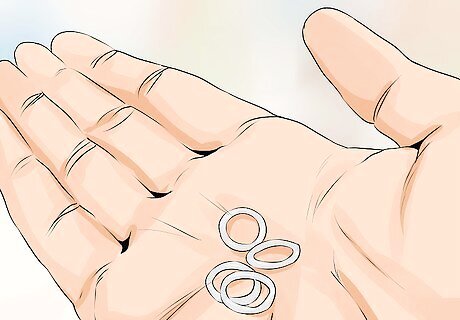
Put in vertical elastics. Vertical elastics are one of the most common forms of rubber bands for braces. They're used to occlude crooked teeth together. With vertical elastics, there will be a total of six hooks. Two hooks will be between your upper canine teeth, which are the pointier teeth found in the corners of your mouth. There will be four hooks in your lower mouth, two between your lower canine teeth on either side of your mouth, and two others on either side near your molars. Molars are the bigger teeth towards the back of your mouth. You will use two rubber bands. On either side of your mouth, wrap the rubber band around the upper hook and lower hooks to form a triangular shape.
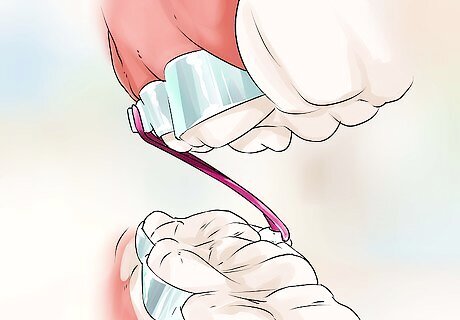
Figure out how to put in cross elastics. Cross elastics are another common configuration of braces. They are used to correct an overbite. You will only use one rubber band in cross elastics. On the left or right side of your face, there will be a button towards your top molars on the side of your teeth facing your tongue. There will be another button on your bottom molars on the side of your teeth facing away from the tongue. Connect a rubber band between these two buttons, starting with the top button.

Apply Class 2 and 3 elastics. Class 2 and 3 elastics are a variation on cross elastics that are used to correct different issues. Class 2 elastics are also used to correct overbites. Your orthodontist might prescribe them over cross elastics depending on your type of overbite. On your upper canine teeth, there will be a hook on the side of your teeth facing away from your tongue. There will be another hook on your lower teeth attached to your first molar. This will also be on the side of the tooth facing away from the tongue. Attach a rubber band from the first hook to the second hook. An overbite usually has another negative part called over jet, which means that there is a space between your lower and upper teeth when you close your mouth. Class 2 elastics are used to also correct the over jet. Class 3 elastics are used to correct an underbite. There will be a hook on your lower canine teeth, on the side of the teeth facing the tongue. There will be another hook on your upper teeth on your first molar, on the side facing the tongue. Wrap a rubber band around these two hooks.
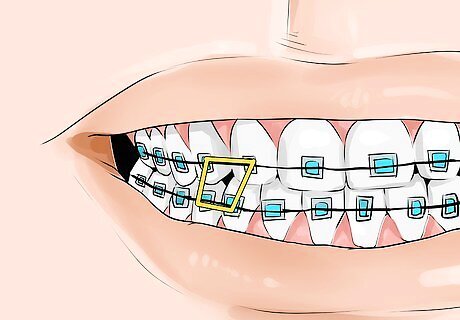
Use Front Box Elastics. Front box elastics are used to correct an open bite. That is, when you are unable to fully close your mouth. There will be four hooks, two on top and two on the bottom, found towards your front teeth on the lateral incisors. These are the smaller teeth right between your central incisors, or your big front teeth, and your canines, the sharp teeth on the side. Connect the rubber band between all four hooks, forming a box shape.
Caring for your Teeth
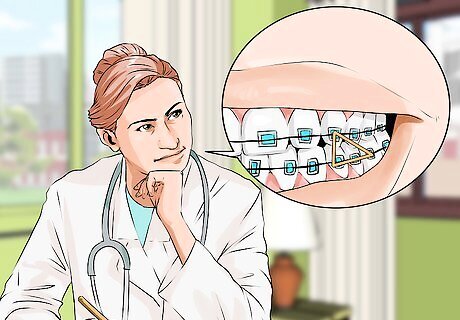
Understand the necessity of rubber bands. Many people dislike having to wear rubber bands on their teeth; however, your dentist prescribed you rubber bands for a reason. Understand why rubber bands are sometimes necessary. Braces themselves adjust the alignment of teeth to straighten them out. Rubber bands do the work of pulling the jaw forward or backwards in order to line up your teeth correctly so they fit together when you bite down. Rubber bands play an important role in adjusting the muscular reflex of biting in the right position, so wearing them is really important, even if it feels awkward in the beginning. If you have an extensive overbite or underbite, you will probably be prescribed elastics. You should wear them as your dentist instructs and only take them out to brush your teeth. It is also important to check if you have placed your rubber bands in the correct position, as your orthodontist showed you. Take some pictures in the dental office and compare them at home using a mirror.
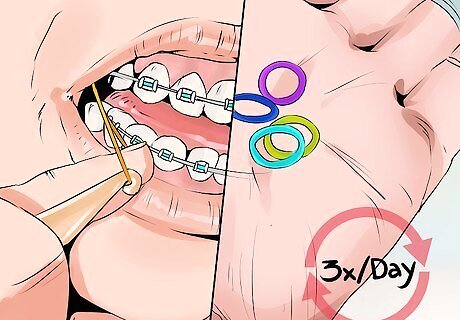
Change your rubber bands three times a day. Unless your orthodontist or dentist instructs otherwise, your rubber bands should be changed three times a day as they lose their elasticity over time. Changing them before bed and after meals can help you stay on schedule.

Replace lost or broken rubber bands immediately. In the event a rubber band breaks or falls off during sleep and cannot be found, you need to replace the band immediately. Rubber bands should be worn 24 hours a day, seven days a week. For every day you skip wearing rubber bands, you lose three days of treatment. This can result in you having to wear braces significantly longer than is comfortable.
Coping with Rubber Bands

Prepare yourself for sore teeth. It will take your teeth time to adjust to rubber bands. Expect your teeth to be sore for the first few days. The first 24 hours with rubber bands is generally the worst. After a while, you'll be able to wear your rubber bands nonstop with minimal pain. If the pain is intense, talk to your orthodontist about gradually easing into wearing rubber bands rather than starting off wearing them 24/7.
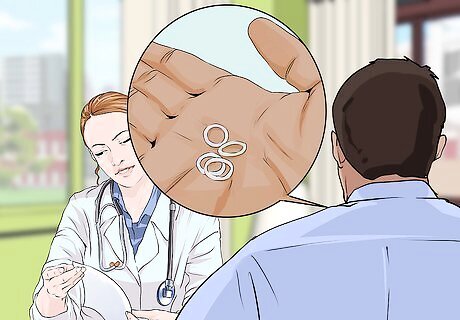
Have backup rubber bands. Orthodontist-prescribed rubber bands generally hold up well, but they do sometimes break or fall off. Always keep backup rubber bands. If you're going out, keep a small bag of backup bands in your pocket or purse.
Have fun with colors. Rubber bands come in a variety of colors. As many people feel unattractive when wearing braces, and experimenting with different color rubber bands can be a fun way to make them feel more appealing. Try coordinating colors for special events like holidays. You could use black and orange rubber bands for Halloween, for example. Ask for rubber bands in your favorite color. Some orthodontist offices may make neon or glitter colored rubber bands for teens and preteens.




















Comments
0 comment